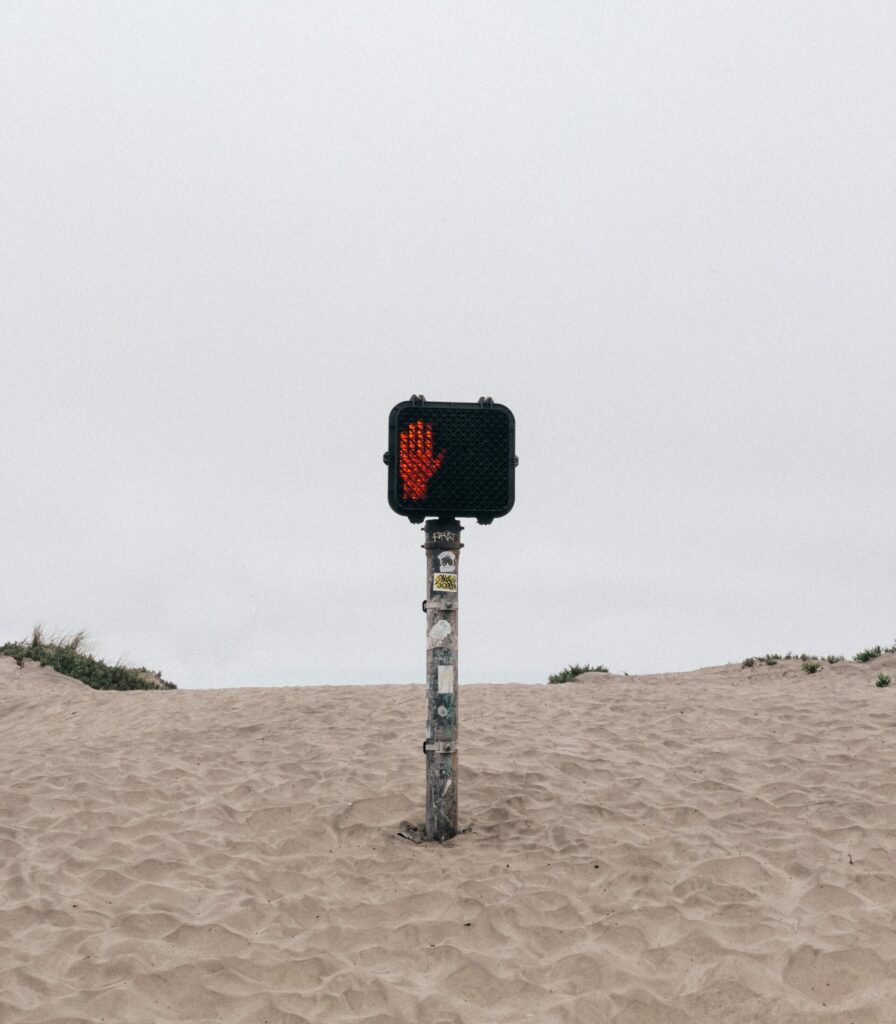Longtime Lifeguard Says New Surfers Need to Quit Learning at Ocean Beach

If you’re headed to learn at Ocean Beach, think again. (Nicholas Ismael Martinez)
Doug Armstrong is an ocean rescue supervisor who works exclusively at Ocean Beach in San Francisco. His team is located within the Golden Gate National Recreation Area and also covers Stinson Beach, nearby where Armstrong lives in Marin County. Their jurisdiction covers all the coast line between the two beaches, too. He’s been a lifeguard for more than 20 years, and he’s been in this role for just over a decade. Through all of that territory, Armstrong says Ocean Beach is the most dangerous beach he oversees. And the boom of pandemic-born surfers has led to rescuing more surfers at Ocean Beach than ever in the history of the program. “Ocean Beach is one of the most dynamic beaches in California,” Armstrong says. “And certainly the most dangerous that abuts a major city.”
The lifeguard says he’d have to double check statistics, but does confirm that ocean recreation is up across the board through all the beaches where there’s access. It’s been a rise of beginner and intermediate surfers over the last five years, so not just during the pandemic. That tracks given the surge for the sport’s popularity writ large; in William Finnegan’s Barbarian Days, the author reports a 15 million worldwide uptick from 2002 to 2010 alone, and that was before everyone was locked down thanks to COVID. And Ocean Beach holds a rare, Black Diamond-esque allure amongst surfers. The currents at the beach, coupled with the potential swell the coast can receive, makes for a powerful combination. The way in which the beach faces, and its orientation on the peninsula, makes it a haven for experts and a terrible place for learners. “You can get out quickly and realize the surf is going to be big,” Armstrong says. “Then you lose your board, your leash snaps, or you can’t physically get in.”
Emergency call volumes have increased at the beach, Armstrong says, as new surfers try their hand at OB. In fact, rescue calls tend to be higher on days when the surf is calm. Other rescue entities cover other chunks of that coastline, but those white and red patrol trucks on Ocean Beach are the only protectorates of San Francisco’s longest coastline. And Armstrong makes clear that he wants people to enjoy the beach. But he also wants people to be smart, safe, and respectful. He cites both the pandemic and a growing attraction to the Bay Area as reasons why surfing has become more popular in the city. Before people leash up and launch into the tides, Armstrong says it’s important to do research. “There’s a personal responsibility to one’s own safety and to understand what they’re getting into,” Armstrong says.
It’s tough to be a first respondent to such a big beach with such tumultuous waves. But Armstrong is pleased with how people have come to know him and his colleagues. “We’re integrated into that community with surfers, dog walkers, rangers,” Armstrong says. “We want to be approachable.” At the end of the day, Armstrong says Ocean Beach is just not a beginner’s beach. It is dangerous on easy days, big days, or stormy days, even for advanced surfers. Talk to staff at local shops, do your homework, and lay a foundation so you can enjoy the activity in the long run. “Sit at Ocean Beach and watch a while,” Armstrong says. “Ask yourself, am I ready for this?”








